Makar Sankranti (Assamese: মকৰ সংক্রান্তি | Bengali: মকর সংক্রান্তি | Hindi & Sanskrit: मकर संक्रान्ति | Kannada: ಮಕರ ಸಂಕ್ರಾಂತಿ, | Malayalam: മകര സാന്ക്രാന്തി | Marathi: मकरसंक्रांत | Oriya: ମକର ସଂକ୍ରାନ୍ତି, Tamil: தைப்பொங்கல், |Telugu: మకర సంక్రాంతి) is a traditional harvest festival which is popularly celebrated across India and its neighboring regions.
Day 1: 13 January 2014 – Bhogi / Lodi
Day 2: 14 January 2014 – Makar Sankranti / Pongal
Day 3: 15 January 2014 – Kanuma
Day 4: 16 January 2014 – Mukkanuma
Hindu Astrological Significance:
Makar Sankranti is derived from Sanskrit language where Makar (or) Makar Rashi means the Zodiac Sign: Capricorn and Sankranti reflects “Transition”. The day marks Suns transit into Makara Rashi and is also considered the beginning of Uttarayana , an auspicious 6 month long tenure in Hindu Calender. Makar Sankranti comes under Magha month and Shishir Season of Hindu Calender. After this day, the days start becoming longer and warmer, thus the chill of winter in on decline.
Makar Sankranti identifies a period of enlightenment, peace, prosperity and happiness followed by a period of darkness, ignorance and viciousness with immense sorrow. The six months of northern movement of the sun is followed by six months of southern movement.
12 Sankranti’s per 12 Zodiac signs:
There is a Sankranti every month when the sun passes from one zodiac sign to the next. There are twelve signs of the zodiac, and thus there are twelve sankranti’s as well. Each of these sankranti’s (transition) has its own relative importance, yet two of these are given most significance
- Mesh Sankranti (Aries) : Also known as Pana Sankranti and Maha Vishnu Sankranti, marks the begining of traditional Hindu Solar Calender.
- Makar Sankranti (Capricorn) : Transition of the Sun from Sagittarius to Capricorn, during the winter solstice in the northern hemisphere.
Legends & Religious Significance:
- According to the Puranas, on this day Surya (Sun) visits the house of his son Shani (Saturn), who is the keeper of the Makar rashi(Zodiac: Capricorn). Though this father and Son do not ordinarily get along, lord Surya (Sun) makes it a point to meet each other on this day symbolizing imporance between a father and Son relationship. Traditionally, it emphasizes responsiblity of a son towards his father.
- It was on this day when Lord Vishnu ended the ever increasing terrorism of the Asuras by finishing them off and burying their heads under the Mandar Parvat. So this occasion also represents the end of negativities and beginning of an era of righteous living.
- From Makar Sankranti starts the day of Uttarayana or Devayana (“day” of Devatas (gods). While dakshinayana is said to be the ‘night’ of devatas, so most of the auspicious things are done during this time.
- Another well-known reference of this day came when the great grandsire of Mahabharata fame, Bhishma, declared his intent to leave his mortal coil on this day. He had the boon of Ichha-Mrityu from his father, so he kept lying on the bed of arrows till this day and then left his mortal coil on Makar Sankranti day. It is believed that the person, who dies during the period of Uttarayana, becomes free from transmigration.
- Maharaj Bhagirath, performed great penance to bring Gangaji down on the earth for the redemption of 60,000 sons of Maharaj Sagar, who were burnt to ashes at the Kapil Muni Ashram, near the present day Ganga Sagar. It was on this day that Bhagirath finally did tarpan with the Ganges water for his unfortunate ancestors and thereby liberated them from the curse. After visiting the Patala for the redemption of the curse of Bhagirath’s ancestors Gangaji finally merged in the Sagar. Even today a very big Ganga Sagar Mela is organized every year on this day at the confluence of River Ganges and the Bay of Bengal. Thousands of Hindus take dip in the water and offer tarpan for their ancestors.
- Sikhs celebrate this day as Maghi. The tenth Sikh Guru Gobind Singh tore the Beydaava written by 40 Sikhs and gave them Mukhti on this day. These 40 Sikhs later came to be known as 40 Mukhtas.
Cultures , Rituals and Festive.
Throughout India, the festive celebrations are very colorful and even competitive. People offer thousands of their colorful oblations to the Sun in the form of beautiful kites. The act stands as a metaphor for reaching to their beloved God, the one who represents the best. In the rural and coastal areas, cock fights are held and is a prominent event of the festival. Kite flying, Cock fights and showing might of their cattle is almost a competetive sport.
Makara Sankranti is also to honour, worship and to pay respect to Saraswati (Goddess of Knowledge). At the start of this significant event, there is also worship for the departed ancestors.
Due to India’s diversified cultural background, agricultural environment and geography, Makar Sankranti festival is celebrated differently by region and has its own unique name at locals. Across India, Millions take dip in places like Ganga Saga, Prayag, Godavari.. praying to lord Surya (the Sun God).
Day 1 – Bhogi (భోగి) Day 2 – Makara Sankranti (మకర సంక్రాంతి-పెద్ద పండుగ) Day 3 – Kanuma (కనుము) Day 4 – Mukkanuma (ముక్కనుము)
The first day of the festival starts with Bhogi(భోగి) when people discard old and derelict things and concentrate on new things causing change or transformation. At dawn people light a bonfire with logs of wood, other solid-fuels and wooden furniture at home that are no longer useful. The disposal of derelict things is where all old habits, the vices, attachment to relations and materials things are sacrificed in the sacrificial fire of the knowledge of Rudra, known as the “Rudra Gita Gyan Yagya. It represents realization, transformation and purification of the soul by imbibing and inculcating divine virtues.
Bhogipallu (భోగిపల్లు): In many families, infants and children (typically under the age 3) are showered with fruit called “Regi Pandlu”, that is the Indian jujube fruit. It is believed that doing this would protect the children from evil eye. Sweets in generous quantities are prepared and distributed. It is a time for families to congregate. Brothers pay special tribute to their married sisters by giving gifts as affirmation of their filial love. Landlords give gifts of food, clothes and money to their workforce.
The second day is Makara Sankranti, also called “Pedda Panduga” (పెద్ద పండుగ), which is the main festival, when people offer payers to god , wears new clothes and some make offerings of traditional food to ancestors who have died. Women also draw big and colorful Rangolis (Telugu: Muggulu) in front of their homes. Animals , specially cattle such as Cows, Bulls are decorated. From Children to elders, many participate in kite flying.
Another notable feature of the festival in South India is the Haridas, who walks across houses early in the morning singing songs of Lord Vishnu(Hari) hence the name Haridasu (servant of Hari). It is a custom that this day, Haridasu should’nt talk to anyone and only sing songs of lord vishnu. People offer Rice and money into the pot like vessel that he wears on his head. Similarly, Gangireddu (bull decorated with clothes and ornaments) is also walked to every house. Its considered as Nandi (vehilce of Lord Shiva) that distroys any evil remimenance. People typically offer rice, pulses , clothes etc.
Kanumu Panduga (కనుమ) and Mukkanumu (ముక్కనుమ) are following 3rd and 4rth day celebrations of Maraka Sankranthi.During these days, Cock fights and Bull fights are typical sport across villages showing might of their cattle.
Bhogali Bihu comes from the word Bhog that is eating and enjoyment. It is a harvest festival and marks the end of harvesting season. Since the granaries are full, there is a lot of feasting and eating during this period. On the eve of the day called uruka, i.e., the last day of pausa, menfolk, more particularly young men go to the field, preferably near a river, build a makeshift cottage called Bhelaghar with the hay of the harvest fields and the Meji, the most important thing for the night. During the night, they prepare food and there is community feasting everywhere.There is also exchange of sweets and greetings at this time.
The entire night (called Uruka) is spent around a Meji with people singing bihu songs, beating Dhol, a typical kind of drums or playing games. Boys roam about in the dark stealing firewood and vegetables for fun. The next morning they take a bath and burn the main Meji. People gather around the Meji and throw Pithas (rice cakes) and betel nuts to it while burning it at the same time. They offer their prayers to the God of Fire and mark the end of the harvesting year. Thereafter they come back home carrying pieces of half burnt firewood for being thrown among fruit trees for favorable results. All the trees in the compound are tied to bamboo strips or paddy stems.
Different types of sports like Buffalo-fight, Egg-fight, Cock-fight, Nightingale-fight etc. are held throughout the day. There are other conventional festivals observed by various ethnic-cultural groups. Me-dam-me-phi, Ali-aye-ligang, Porag, Garja, Hapsa Hatarnai, Kherai are few among them.The koch celebrates this bihu as pushna. All assamese around the world celebrates this tradition on the month of January as per English calendar. The Uruka comes on 13 January and Bihu is on 14–15 January.
On 14 January, it is celebrated as Makar Sankranti or Sakraat or Tila Sankranti (in local dialects).As in other parts of country, people take bath in rivers and ponds and feast upon seasonal delicacies as a celebration of good harvest. The delicacies include Chura, Gur(jaggery), various sweets made of til (Sesame seeds) such as Tilkut, Tilwa, Maska, etc., curd, milk and seasonal vegetables. Kite flying festivals are also organized, albeit on a small scale.
On 15 January, it is celebrated as Makraat (in some parts of the state) when people relish special Khichri (Dal-Rice replete with cauliflower, peas and potatoes).
This festival is considered to be one of the most important festival. People start their day by worshiping and putting til (sesame seeds) into fire followed by eating “Dahi-chuda”(remember dahi-chuda is different than chuda-dahi, as in former dahi,i.e. curd predominates over chuda,i.e. beaten rice or avalakki in Kannada in amount) along with Tilkut and Lai.
Generally in morning people eat chuda-dahi ( dahi-chuda is favorite of Brahmins ) with Kohada (red pumpkin) ka bhujiya which is made specially with sugar and salt combination without adding water in it, with lots of LAI, i.e. laddus made of til, chuda, chawal(rice). Women use to prepare these things in groups. After such heavy diet it becomes next to impossible to eat lunch in afternoon, so people spend time in greeting others, playing with kites. In night special Khichidi is made. “khichdi ke yaar, chokha, papad, ghee, achaar” some prefer to add many more side dishes with khichdi like chatni, tilauri etc. Name of this festival is Khichdi, because such grand and rich Khichdi is made only once in a year on this occasion.
- Goa Harvest Festival – Source: tambdimati
.
Uttarayan, as Makar Sankranti is called in Gujarati, is a major festival in the state of Gujarat which lasts for two days.
- 14 January is Uttarayan
- 15 January is Vasi-Uttarayan(Stale Uttarayan)
Gujarati people keenly await this festival to fly kites, called ‘patang’ in Gujarati. Kites for Uttarayan are made of special light-weight paper and bamboo and are mostly rhombus shaped with central spine and a single bow. The string often contains abrasives in order to cut down other people’s kites.
In Gujarat, from December through to Makar Sankranti, people start enjoying Uttarayan. Undhiyu (spicy, baked mix of winter vegetables) and “chikki” (made from til / sesame seeds, peanuts and jaggery) are the special festival recipes savored on this day.
In the major cities of Vadodara, Surat and Ahmadabad, the skies appear filled with thousands upon thousands of kites as people enjoy two full days of Uttarayan up on their terraces. When people cut any kites they used to yell with words like “kaypo che” or “e lapet” in Gujarati language.
.
In Shimla District of Himachal Pradesh Makar Sankranti is known as Magha Saaja. Saaja is Pahari word for Sakranti, start of the new month. Hence this day marks the start of the month of Magha.

Hindu devotees bathe in a hot spring on the banks of the Satluj river on the occasion of the “Makar Sankranti” festival at Tatapani, in the northern Indian state of Himachal Pradesh.
According to the Hindu religious texts, on the day of Uttarayani the sun enters the Zodiacal sign of ‘Makar’ (Capricorn), i.e. from this day onwards the sun becomes ‘Uttarayan’ or it starts moving to the north. It is said that from this day, which signals a change of season, the migratory birds start returning to the hills. On Magha Saaja people wake up early in the morning and take ceremonial dips and shower in the water springs or Baolis. In the daytime people visit their neighbours and together enjoy Khichdi with Ghee and Chaas and also give it in charity at temples. Festival culminates with singing and Naati(folk dance).
.
This is the Suggi or harvest festival for farmers of Kaveri basin of Karnataka. On this auspicious day, young females (kids & teenagers) wear new clothes to visit near and dear ones with a Sankranti offering in a plate, and exchange the same with other families. This ritual is called “Ellu Birodhu.” Here the plate would normally contain “Ellu” (white sesame seeds) mixed with fried groundnuts, neatly cut dry coconut & fine cut bella (Jaggery). The mixture is called “Ellu-Bella” (ಎಳ್ಳು ಬೆಲ್ಲ). The plate will also contain sugar candy molds of various shapes (Sakkare Acchu, ಸಕ್ಕರೆ ಅಚ್ಚು) with a piece of sugarcane. There is a saying in Kannada “ellu bella thindu olle maathadi” which translates to ‘eat the mixture of sesame seeds and jaggery and speak only good.’ This festival signifies the harvest of the season, since sugarcane is predominant in these parts.
In some parts of Karnataka, a newly married woman is required to give away bananas for a period of five years to married women (muthaidhe) from the first year of her marriage, but increase the number of bananas in multiples of five. There is also a tradition of some households giving away red berries “Yalchi Kai” along with the above. Kite flying with community members is also a tradition. Drawing rangole in groups is another popular event during Sankranti.
An important ritual is display of cattle in colorful costumes in an open field. Bulls and Cows are decorated for the occasion and taken on a procession. They are also made to cross a pyre. This ritual is common in rural Karnataka and is called “Kichchu Haayisuvudu.” Farmers typcially follow this ritual of walking their cattle on brisk fire to kill insects and bugs that stick to animals.
Legends:
Lord Sri Rama and his brother Lakshmana met Sabari, an ardent devotee, at Sabarimala. Sabari offered the Lord fruits after tasting them. But the Lord accepted them gladly and whole-heartedly. The Lord then turned and saw a divine person doing tapas. He asked Sabari who it was. Sabari said it was Sasta. Rama walked towards Sasta and the latter stood up to welcome the Prince of Ayodhya. The anniversary of this incident is celebrated on Makara Vilakku day. It is believed that on Makara Vilakku day, Lord Dharmasasta stops his tapas to bless his devotees.
Another popular mythical belief is that the Makara Vilakku is lit there in commemoration of the aarathi performed by Dev rishis and Devas at the time of revelation of His Divine form (Roopa) by Manikantan (an incarnation of Sasta).
This event marks the culmination of the long and arduous pilgrimage to Sabarimala shrine. The light disappears in the evening after the Thiruvaabharanam (divine ornaments) are brought into the sanctum sanctorum and are placed on the Lord. The most significant rituals of worship are performed at the day of Makara Sankaranthi (14 January every year). It draws the second largest number of pilgrims to a place of worship in India. Of particular significance is the fact that this is a remote forest in the Western Ghats in Kerala. Over 50 million devotees vist Sabarimalayi Ayyappa shrine every year.
In Maharashtra on the Makar Sankranti (मकर संक्रान्ति) day people exchange multi-colored halwa (sugar granules coated in sugar syrup) and til-gud ladoos (sweets made from sesame seeds and jaggery). Puranpolis (flat bread stuffed with jaggery) are offered for lunch. While exchanging til-gul as tokens of goodwill people greet each other with the words, “til-gud ghya, aani god god bola” meaning ‘Accept these tilguls and speak sweet words’. The under-lying thought in the exchange of til-gul is to forget the past ill-feelings and hostilities and resolve to speak sweetly and remain friends.
This is a special day for the women in Maharashtra when married women are invited for a get-together called ‘Haldi-Kunkum’ (literally meaning turmeric and vermillion) and given gifts such as utensil, clothes etc. Typically, women wear black sarees or black coloured outfits on this occasion. The significance of wearing black is that Sankranti comes at the peak of the winter season and black colour retains and absorbs heat, helping keep warm. kite flying are very popular in Maharashtra on Sankranti occasion
.
In the temple of Lord Jagannath this festival is observed as Nabanki and ‘Uttarayana Yatra’. In Mayurbhanj, Keonjhar,kalahandi, koraput and Sundargarh where the tribal population is more, the festival is celebrated with great joy. They have been celebrating this festival with great enthusiasm. They sing, dance and enjoy.Many tribal in our country start their New Year from the day of Sankranti by lighting bonfires, dancing and eating their particular dishes sitting together.
.
Day 1 – Bhogi Pandigai || Day 2 – Thai Pongal || Day 3 – Maattu Pongal || Day 4 – Kaanum Pongal
The first day of festival is Bhogi. It is celebrated by throwing away and destroying old clothes and materials, by setting them on fire, marking the end of the old and the emergence of the new.
The second day of festival is Thai Pongal or simply Pongal. It is the main day of the festival, falling on the first day of the Tamil month Thai. It is celebrated by boiling rice with fresh milk and jaggery in new pots, which are later topped with brown sugar, cashew nuts and raisins early in the morning and allowing it to boil over the vessel. This tradition gives Pongal its name. The moment the rice boils over and bubbles out of the vessel, the tradition is to shout of “Ponggalo Ponggal!” and blowing the sangu (a conch), a custom practiced during the festival to announce it was going to be a year blessed with good tidings. Then New boiled rice is offered to the Nature during sunrise, a gesture which symbolises thanks to the sun and nature for providing prosperity. It is later served to the people present in the house for the ceremony. People also prepare savories and sweets such as vadai, murukku, payasam and visit each other and exchange greetings.
The third day of festival is Maattu Pongal. It is for offering thanks to cattle, as they help farmer in different ways for agriculture. On this day the cattle are decorated with paint, flowers and bells. They are allowed to roam free and fed sweet rice and sugar cane. Some people decorate the horns with gold or other metallic covers. In some places, Jallikattu, or taming the wild bull contest, is the main event of this day and this is mostly seen in the villages.
The fourth day of the festival is Kaanum Pongal (the word kaanum means “to view”). During this day people visit their relatives, friends to enjoy the festive season. This day is a day to thank relatives and friends for their support in the harvest. It started as a farmers festival, called as Uzhavar Thirunaal in Tamil. Kolam decorations are made in front of the house during Thai Pongal festival.
.
Meethe GUD me mil gaya TIL,
Udi PATANG aur khil gaye DIL,
Jeevan me bani rahe SUKH aur SHANTI,
MUBARAK ho apko MAKAR-SANKRANTI.


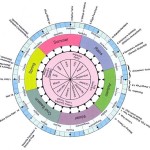
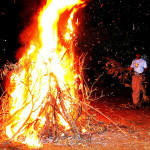
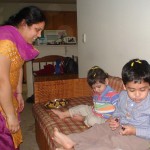
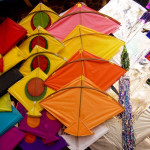
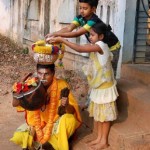
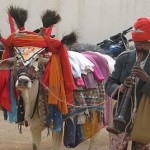
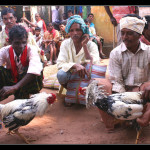
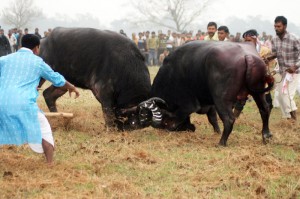
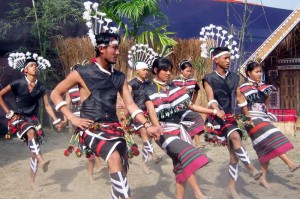
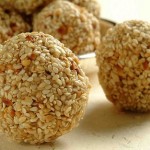
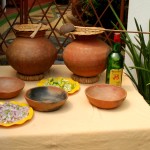
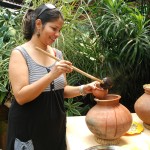
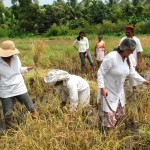
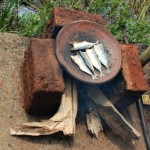

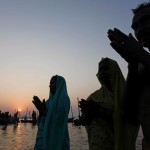
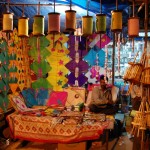
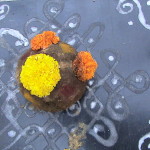
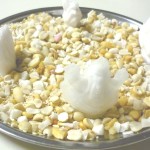
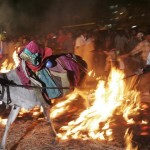
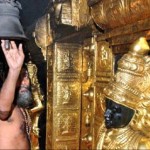
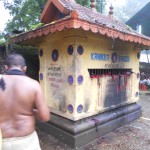
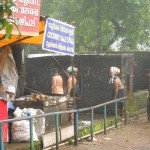
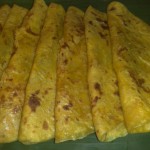
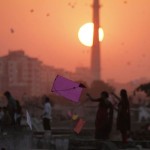
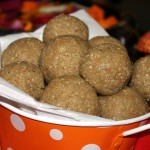
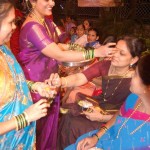
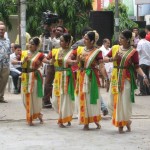
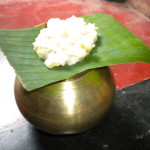
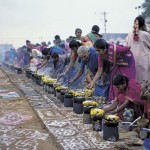
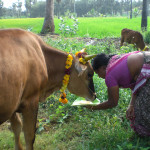
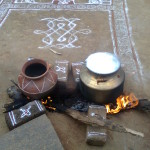
Very nice photos and article. I am wondering if I can use the photos for a presentation. Thanks.
I am feeling lucky as I can understand your language thank you for supplying the best website
not so helpfull
not so helpfull did not like it